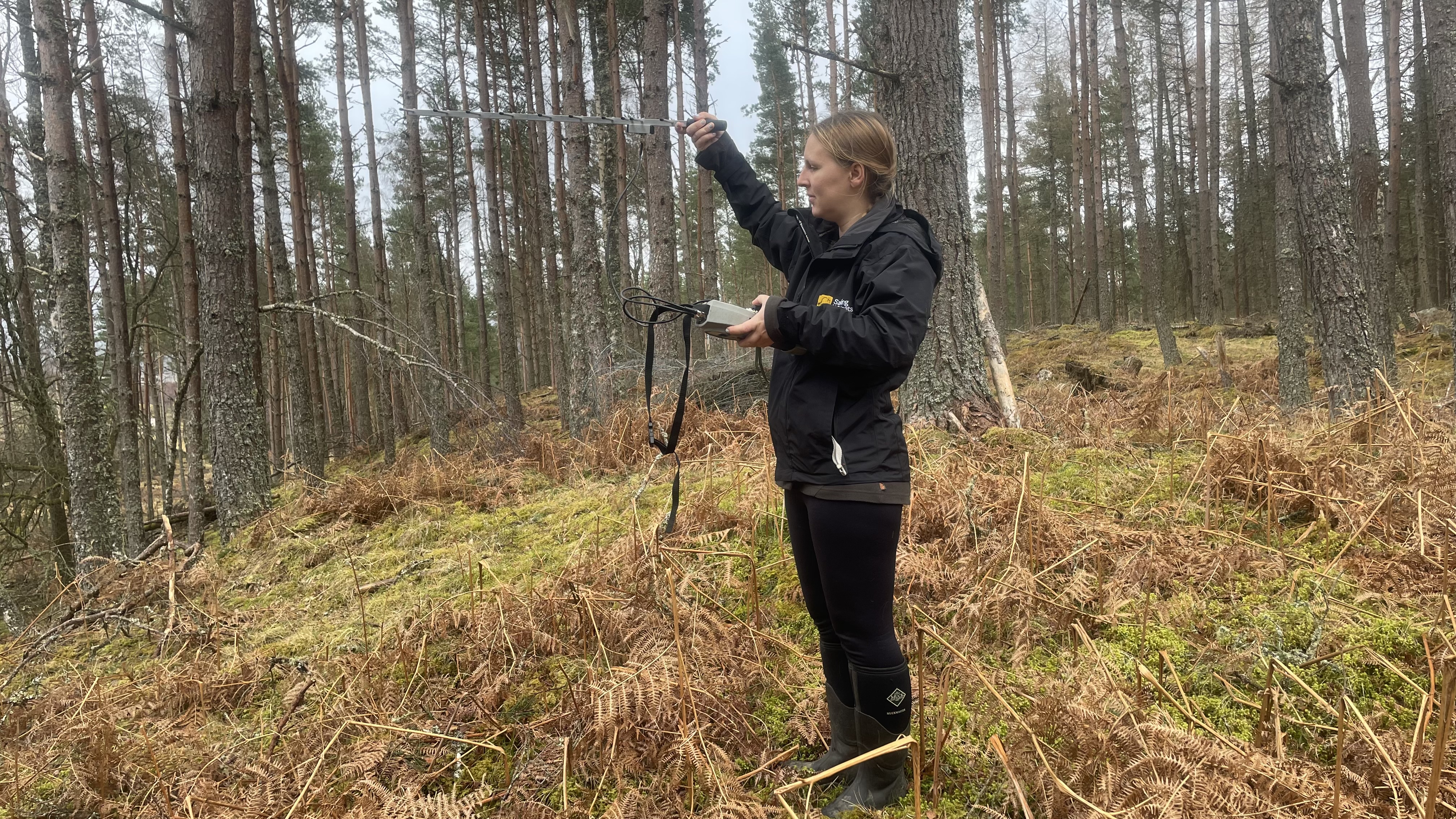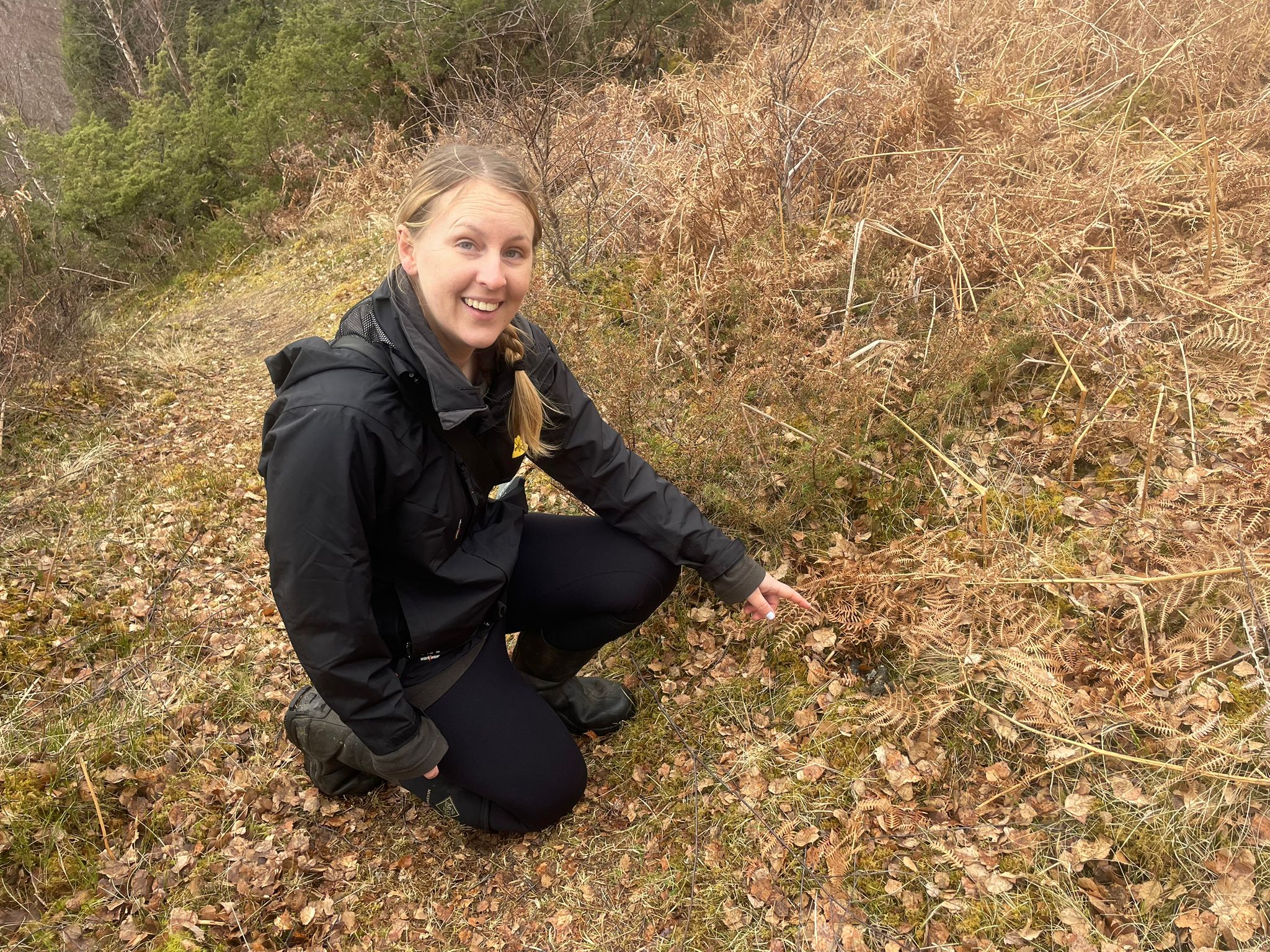A day in the life of a field officer
Last year, the Saving Wildcats partnership released 19 wildcats into the Cairngorms National Park to help restore the species in the Highlands. Since the first releases began, the project’s field team have been tracking these elusive felines across a vast landscape using GPS-radio collars, learning more about their movement and behaviour as the days go on.
Ten months on from the initial releases, field officer Lara is preparing for a day in the field. Given the ever-changing nature of her role, with wildcats constantly on the move, the field team sit down most mornings to decide which wildcats they should prioritise tracking. There are many factors that weigh into this decision-making process, such as team capacity, previous known locations of wildcats and particularly the weather.
The team then prepare tracking kits with the assistance of two long-term volunteers. These kits are comprised of an antenna, a receiver, and a base station. The antenna picks up the radio signal that is emitted from the GPS-radio tracking collars. The receiver itself then allows the field officers to hear ‘pings’ from the collars, which get louder and clearer the closer they get. Once the field officer is in range, the GPS data (information about location) downloads automatically to the base stations via a secure connection.
“It’s important to keep these kits in great condition as they are specialist equipment and very expensive, maintaining the kits and preparing them every morning is a regular part of my role”, Lara explains.
Once Lara has made sure she has all her layers on to deal with the day’s weather (which happens to be horizontal wind and drizzly rain), she gets one of the project’s vehicles ready and then sets off for the field. The Saving Wildcats team are based at the Royal Zoological Society of Scotland’s (RZSS) Highland Wildlife Park, in Kincraig. Fortunately, the wildlife park isn’t too far away from the last known locations of some of the released wildcats, so after a short drive, Lara arrives at the first site.
First on the agenda, a walk up a fairly vertical hill to check on the position of a camera trap in the release site. Placed a few days earlier, Lara wants to check the images that have been captured on the camera to see if it’s managed to get any photos of a female that frequents the area.
While GPS-radio tracking collars are invaluable for tracking the movements of animals, they don’t allow us to make a direct visual assessment of the body condition, whereas camera traps can take photos and videos of the cats in action. The cameras are often baited with valerian root, a strong-smelling herb that is attractive to some cats, to entice the wildcat to come in front of the camera. They often rub against it, just like in the image below, as valerian can elicit the same behavioural response as catnip.

As soon as the camera trap has been checked, and the old SD card containing images has been pocketed and a replacement inserted, Lara is off briskly down the hill to get back to her vehicle so that she can drive to a neighbouring estate, where a male wildcat has recently been located.
After another short drive, Lara arrives at the site where she begins to use the tracking equipment in earnest, hoping to hear the pings which indicate that a wildcat is nearby. However, after walking around for quite some time, she concludes that the location on this particular day isn’t great.
“You never know which location is going to be the best to download data from. Just because one time you get lucky and a wildcat happens to be close, doesn’t mean that’s always going to be the case”.

Not letting the disappointment dissuade her, she’s quickly off to another site, this time to track a different female. Upon exiting the vehicle, it’s only a few short minutes before Lara’s receiver starts to make the much-awaited sound of ‘pings’, indicating that a wildcat is close-by! As if further excitement was needed, she then spots some wildcat scats, another indication that she’s hot on its trail. Lara bags up the scat, notes the coordinates of where it was found and then keeps heading up the track. This scat sample will be sent off for analysis, to see what types of prey the female has been eating.

Eventually after an energetic 20-minute walk (which sounds simple, but consists of uneven footing, ascents and very narrow paths carrying the cumbersome tracking equipment), the receiver makes a crackling sound as the GPS data begins to download on to Lara’s base station.
“The sound of data downloading is amazing’”, Lara enthuses. “It always makes you feel like the running around and unknown elements of your job are worth it.”
Later on in the day, Lara will take a look at this data back in the office to see where the wildcat has been, using this data to inform the next day of tracking.
Eager to make the most of her day, Lara then heads to another site, on the hunt for a different male. To start with, she crosses a field, with ‘pings’ heard faintly from the receiver. However, as she gets closer to a small section of woodland, the pings grow quieter again, indicating that she’s moving away from the cat in question. Circling back through the field, she takes a different approach, and clambers on a rocky outcrop to get a good line of sight of the area, a trick that all our field team use to increase the likelihood of downloading data from the collars. Unfortunately, this time she has no luck and after a lot more searching, getting increasingly muddy while doing so, she must conclude that her chances are gone, as the collar has stopped pinging for the day. The field team have set collars to ping for a three-hour period to have time to find them, but not drain down the batteries. It’s 4pm and now time to head back to the Saving Wildcats offices.
“This is typical. You can be committed to walking miles and climbing up hills, but this is the reality of our work. It keeps us on our toes and makes it so that no day is ever quite the same. I like the variability and enjoy exploring the Cairngorms, so it doesn’t bother me, I’ll always be on the lookout and ready to track wildcats! I have grown fond of the released cats as we have learnt more and more about their individual behaviours and their different personalities”.
Back at the offices, Lara uploads the data and views the GPS points on a map. The field team analyse the GPS data to determine if there are any concerns about that cat, for example, if it is displaying reduced activity, this might be an indication that the wildcat is injured. After looking over all the day’s data its important to update all landowners on the locations of the cats. The work we do wouldn’t be possible without landowners allowing us to track across their land. It’s a two-way relationship built on trust and transparency that allows us to track the wildcats and we’re incredibly grateful for their support. Once Lara has analysed all the available data, updated all the landowners that she needs to, she heads home to get some rest before she does it all again tomorrow!
